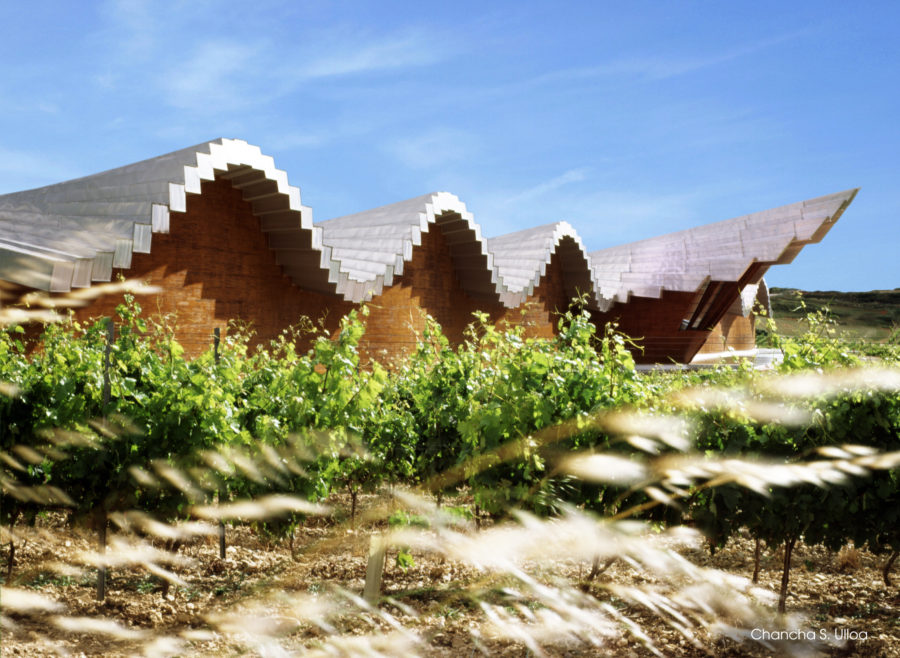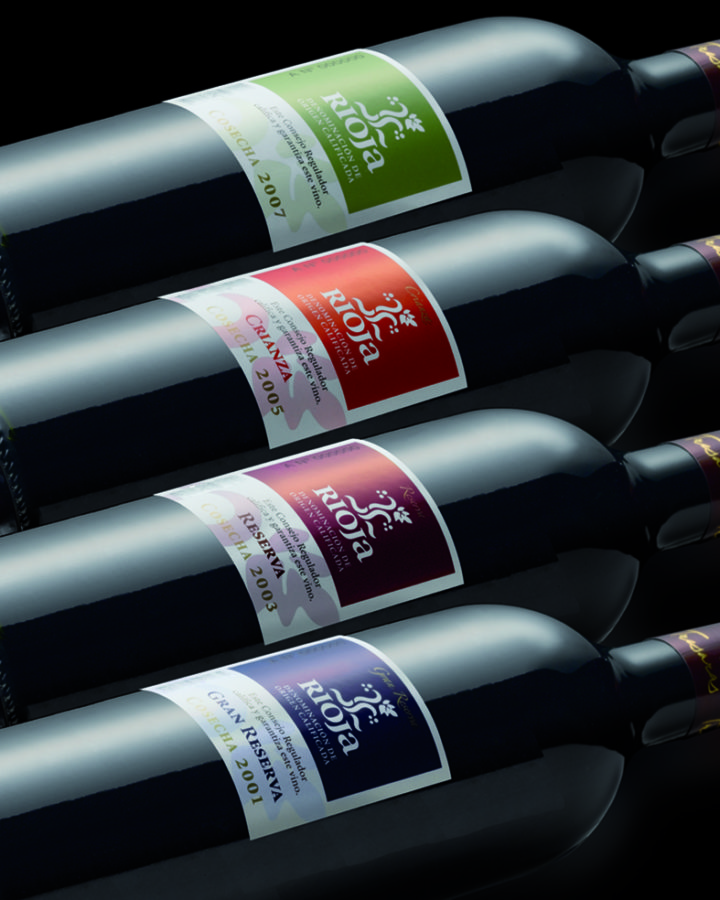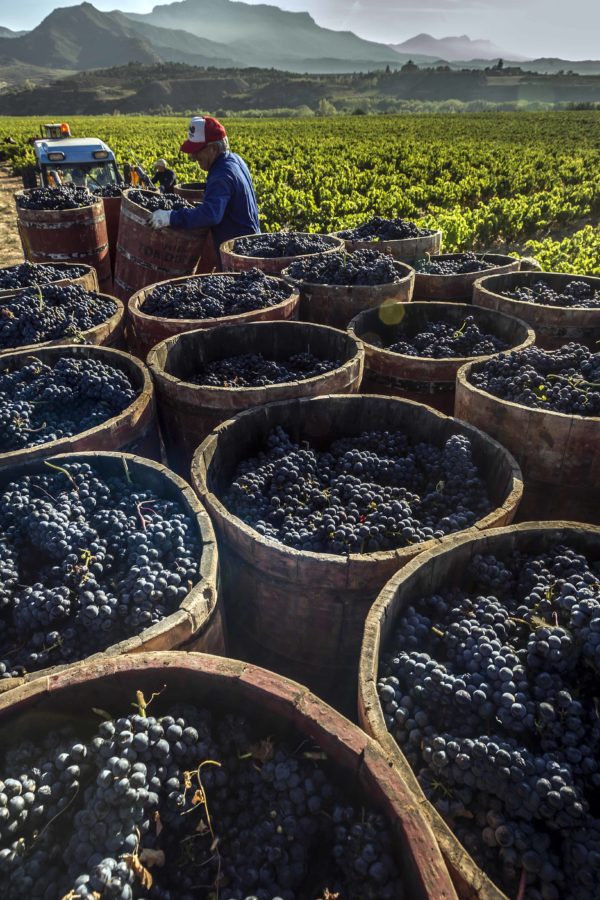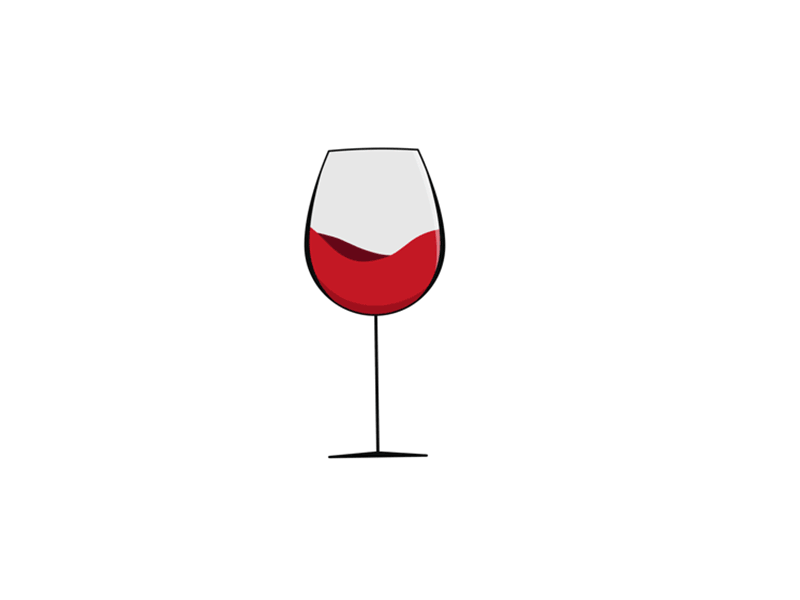西班牙葡萄酒之皇:里奧哈
醞釀革新

里奧哈(Rioja)作為西班牙最重要,最優秀的產區之一,除了擁抱傳統精煉的釀酒工藝,還有著永遠向前的目光,為了讓里奧哈的葡萄酒繼續站在葡萄酒界的頂尖,他們不斷思索著不同的方向,迎接新時代的來臨,當地的葡萄酒法規也不斷演變,讓當地的釀酒師發掘里奧哈的更多可能性。
As one of the most important and prestigious regions in Spain, Rioja embraces both traditional winemaking and vision to evolve in order to stay at the top of the wine world globally. With emerging new generation of winemakers and evolving wine world. The Rioja Regulatory Council has been constantly reviewing the rules and regulations about Rioja wine and made a new set of rules recently to code with the new wine era.
陳年佳釀
里奧哈作為葡萄酒界最受歡迎的產區之一,最嚴格的DOCa法定產區法規確保區內葡萄酒品質長期處於最高水平。一直以來里奧哈葡萄酒都因為經過在酒莊內長時間熟成,讓每一瓶出廠的葡萄酒都達到非常成熟的狀態,因而深得酒迷的愛戴。而自1979年倡導的傳統酒標分類成Crianza、Reserva及Gran Reserva的陳年熟成認證也成為了過去數十年為里奧哈葡萄酒確立的品質保證。以至後來加入的淺綠色標籤,讓新一代的里奧哈釀酒師有更大的靈活性去打造他們心目中的葡萄酒。
Maturity makes great claret
As one of the most popular appellations worldwide, Rioja benefits from the very strict DOCa regulations which ensure great wine quality and consistency to be maintained. Wine lovers enjoy the mature Rioja wine that has been aged gracefully in cellar before releasing to the market. Every bottle of Rioja shows the best condition after extended maturation. In 1979 the regulated categories of Crianza, Reserva and Gran Reserva have played an important role of proving the quality, authenticity and originality for Rioja wines. The added light green generic label also reflect the commitment to evolving with the rise of a group of adventurous new generation of winemakers. They could still craft unique style of wines under the Rioja label.

精益求精
一直以來里奧哈葡萄酒背標的四款標籤一直是作為防偽及確保原產地證明的最佳標記,作用顯著,為配合2017年推出的新改革,現有關於葡萄酒陳年熟成的法規也重新定義,以配合以地域作主導的新法規,讓釀酒師有更大的空間釀造更優秀的葡萄酒。
Pursuit of the Best
The four back labels issued by the Rioja Wine Council has been the best tools for anti-fraud and ensuring wine authenticity and quality for Rioja wine in the past few decades. In order to code with the new wine era, and the revolution of Rioja wine regulations, some adjustments has been made to these traditional regulations about maturing wine. Some changes has been made to facilitate the new regional regulation defined and started in 2017. Winemakers have more flexibility to show their talents in their wines.
Gran Reserva及Reserva
深藍色背標的Gran Reserva紅葡萄酒級別的新標準如下:「必須在橡木桶及酒瓶中陳釀60個月,最少24個月在橡木桶中,之後再在酒瓶中熟成最少24個月。」這給予釀酒師在選擇於那一種容器上熟成時更具彈性。
暗紅色背標的Reserva級別的葡萄酒,新法規的改變主要是規定推出市場前必須有最少六個月瓶內熟成。而完整的如下:「必須在橡木桶及酒瓶中陳釀36個月,最少12個月在橡木桶中,之後再在酒瓶中熟成最少6個月。」
鮮紅色背標的Crianza則「必須在橡木桶陳釀12個月,之後再在酒瓶中熟成最少12個月。」
淺綠色原產地酒標,原本用於新酒、粉紅酒或未經橡木桶熟成的酒款,後來不少釀酒師以獨特的熟成工藝而未能歸納於上面三個類別便以這淺綠色酒標作識別。所以現在使用綠標的不一定是簡單的新酒。
白葡萄酒方便也有重大改革,由2017年起單一葡萄品種的白葡萄酒,只要是使用規定的品種,包括:Viura、Malvasia、Tempranillo Blanco、Garnacha Blanca、Maturana Blanca、Turruntés、Chardonnay、Sauvignon Blanc及Verdejo都被允許。
Gran Reserva and Reserva
The Dark Blue labelled Gran Reserva has to reach the following new standard: “wine must be ageing in oak barrels and in the bottle for a total period of at least sixty months, with a minimum twenty-four months’ barrel ageing, followed and complemented by a minimum twenty-four months in the bottle.” This gives options to winemaker to choose between both containers during ageing.
The Dark Red labelled Reserva wine has new regulations to be in bottle for at least 6 months before releasing. “wine must be ageing in oak barrels and in the bottle for a total period of at least thirty-six months, with a minimum twelve months’ barrel ageing, followed and complemented by aminimum six months in the bottle.”
Similar to the old one, Light Red labelled Crianza wines must “age for at least 1 year in oak barrels and one more year in bottle.”
Most interestingly, the Light Green label, originally designed for young whites, rosé and reds without barrel-ageing, it is now widely used as a generic labels for winemakers who did not follow the 3 categories above during winemaking. They are usually more adventurous in crafting unique wine. Remember they are not necessarily entry level wines or simple wines.
White wines also have a big change, from 2017, single varietal white wines are allowed to labelled as Rioja, including those made from varietals including: Viura, Malvasia, Tempranillo Blanco, Garnacha Blanca, Maturana Blanca, Turruntés, Chardonnay, Sauvignon Blanc and Verdejo.

新時代、新標準
踏入下一個新時代,他們在2017年更確立了一系列的新標準,除了舊有關於陳年熟成年期的標籤外,更會加入不同的新元素,當中最重的便是關於產區地域的元素。對里奧哈葡萄酒有較深入的酒迷都可能會認識整個巨大的里奧哈產區被分為三個大區:Rioja Alavesa、Rioja Alta及Rioja Baja(現被改為Rioja Oriental)。傳統不少酒莊會以來自不同產區來混釀,再熟成裝瓶。而因為地埋因素及氣候區別,由這些產區葡萄單獨釀造的葡萄酒都會擁有顯著不同的風格,以往在酒標上都較難有統一清楚的標示,現在將會以Vino de Zona表示。要達到相關要求,包括葡萄必須來自當區,而且釀造、陳年、裝瓶也必須在當區進行,才能以Rioja Alavesa、Rioja Alta或Rioja Oriental在酒標上標明。
另外除了大產區,里奧哈葡萄酒管理局也根據過去二十年的記錄,仔細規劃個別村莊作為在酒標上的優質村莊,有點像布爾岡或波爾多的村莊概念,在里奧哈將以Vino de Municipio作標示。標示村莊級的葡萄酒,葡萄、釀造及熟成均必須在相應莊村內進行,如果是從葡萄農收購葡萄釀酒,也必須有長達十年的合作以上,並可追溯,才可以使用村莊名稱命名。酒標上也會顯示這瓶葡萄酒是來自那合產區及那條村莊。現時為止里奧哈共有144個法定村莊可以Vino de Municipio作標示。
而作為地域分類的最高級別,Viñedo Singular則是以個別最優秀的莊園或單一葡萄園作為酒標上的識別,以示這些葡萄酒都是來自最優秀的葡萄園,有點像布爾岡的Monopole定義。以單一葡萄園作標籤的里奧哈葡萄酒,必須要是來自相應單一田,也必須是只由一間酒莊釀造。葡萄園的規定更嚴謹,平均樹齡必須達到三十五年以上。每公頃的紅葡萄收成也不能多於5,000公斤,白葡萄則不能多於6,922公斤。葡萄農也必須是持卡獲認證的葡葡農,而且必須遵守種植規定,收成也必須以人手採收。葡萄園名稱必稱成功申請獲得西班牙專利商標局得品牌註冊,而且每款葡萄酒也必須經過雙重評級鑒定為優秀的葡萄酒才可獲使用Viñedo Singular標示。現已有超過五十家酒莊申請,約一百多個單一莊園正在審批當中。
New era comes with new rules
Stepping into the next era, the Rioja Wine Council setup up a new system besides the successful labels on maturation. The whole new idea is about the originality, regional concept and terroirs. For those familiar with the division of the 3 sub-region of Rioja Alavesa, Rioja Alta and Rioja Baja (which will be renamed as Rioja Oriental). Most of the estate in Rioja are blending wines made from grapes of these regions to get a balanced complex wine and age in the cellar. But because of the difference in climate, geography, wines made from a single region show obviously different style and taste. But this was not commonly presented in the label in the past. The new regulations have set up a Vino de Zona to address the wine zone that a wine belongs to. It also has strict regulation that at least 85% is from the zone with other grapes from neighboring zones allowed. Wines must be grown, made, matured and bottled in the same region in order to be able to bottle under the Vino de Zona label, including Rioja Alavesa, Rioja Alta or Rioja Oriental.
Besides this zonal categorization, another category is a smaller regional appellation label called Vino de Municipio. It is restricted to a particular village or town, similar to the village wines in Bordeaux or Bourgogne. The Vino de Municipio wines also have very strict rules governing the growing, winemaking, maturation and bottling must be in the same village. Only 15% allowance is given to grapes coming only from neighbouring villages. If the grapes are bought from grape growers, it must be a long term contract with at least 10 years of past record for the wine to be labelled Vino de Municipio. Now there are 144 approved villages which the Vino de Municipio could be used. The decision is according to the record from the past 20 years, regarding especially the quality and uniqueness of that particular village.
The last one, also the top one, is the Viñedo Singular, which means single vineyard or estate wines, they are the top wines from a single high quality origins, similar to that of the Grand Cru Monopole in Bourgogne. This label is only for a single vineyard which has only 1 owner and only 1 wine is made from the vineyard from a single producer. They have even more strict rules for approval. The average vine age must be over 35 years, with yield of red grape not more than 5,000 Kg per hectare, and whites not more than 6,922Kg per hectare. There are also many restriction in viticulture: Wine growers must be certified and all the vineyard treatments are regulated. Harvest could only be done by hand and the vineyard name must be registered at the patent and trademark department before you could get the approval. At the same time, the wine made must reach the Rioja Wine Council very strict quality and authenticity policy and requirements in order to use the Viñedo Singular labelling. Now over 50 wineries have been applying and over 100 single vineyard wines are being inspected for approval.

里奧哈優質氣泡酒
另一新的法規則是關於氣泡酒的,Espumoso de calidad de Rioja將會是里奧哈最新優秀葡萄類別,包括優秀的氣泡酒及粉紅氣泡酒。2017年宣布後也要等到今年才有酒上市,因為他們以優質的「傳統方法」,在瓶內進行二次發酵工藝釀過,二次發酵後瓶內陳釀最少15個月,Reserva則達到24個月,而特級年份則達36個月,而且也會根據甜度分類。看來西班牙除了Cava外,看來將有另一個優秀氣泡酒產區掘起,大家拭目以待吧!
New wave of fine Rioja sparkling wine
Another exciting Rioja wine label would be the quality sparkling wine, Espumoso de calidad de Rioja, including white and rosé sparkling wine. Announced in 2017 but wine could only arrive earliest this year. It is because only traditional method is allowed to make this category of wine, and at least 15 months of bottle ageing on lees after secondary fermentation is required. A higher level of Reserva requires at least 24 months and a single vintage Gran Añada required at least 36 months of maturation before releasing. They will also be categorized according to the sweetness. We look forwards to another quality sparkling wine from Spain besides the popular Cava. We believe the traditions and strict quality control of the Rioja wine region will craft some wonderful sparkling in the furure.
對於這套全新的標準,我們相信能夠讓酒迷對里奧哈葡萄酒有更深入的認識,尤其在地域、風土上的區別,不同村莊具有不同的酒風,比以往只能去查究酒莊的資料,酒標上的地域標示可以讓大家有一個簡單快捷的概念。我們也相信這也是個新的點子,讓釀酒師嘗試進一步探究里奧哈風土的可能性,刺激更多新浪潮的當代里奧哈葡萄酒的出現,長遠來說對這歷史悠久的產區發展有著正面的影響,就好像多年前的產區標準一樣。
We believe that these new regulations could help the development of the region, especially to raise more interests in the regional variations in terroirs and styles of wine. It will be more easy for people to learn about the regionality of an estate by reading the labels in order to pick a wine quickly. Besides, it will also give winemakers opportunity to explore the possibilities of local terroirs and inspire new concept of winemaking. In long term this is a good stimulus for the sustainable development of this historic wine region, like what was being suggested decades ago.


